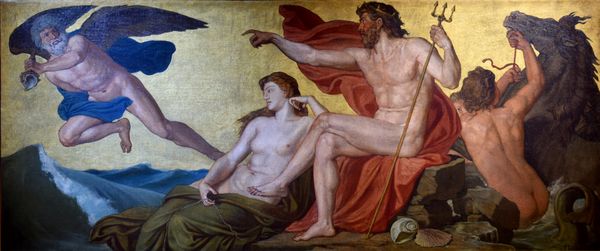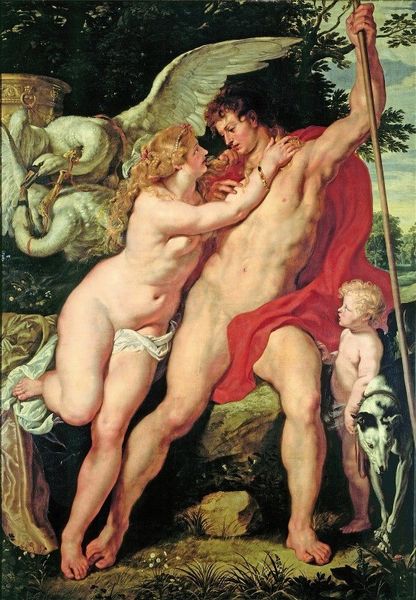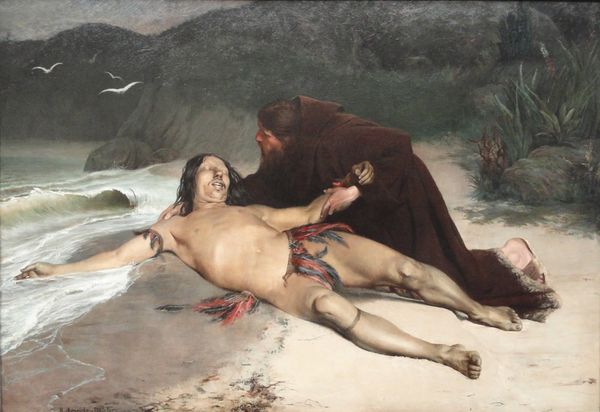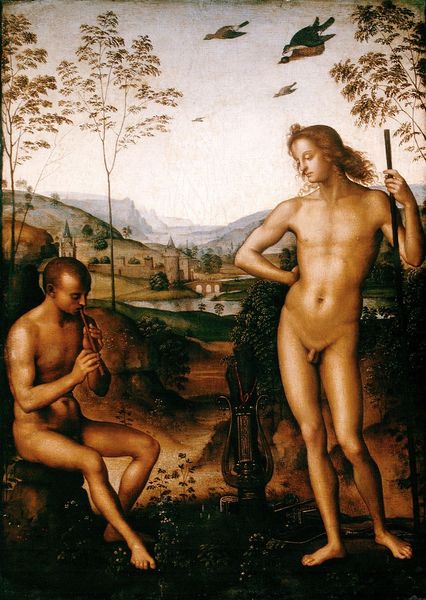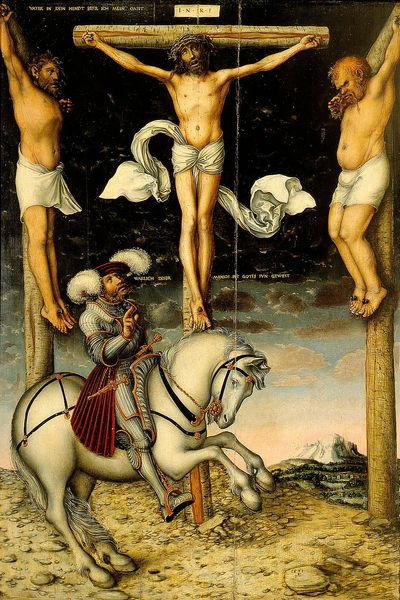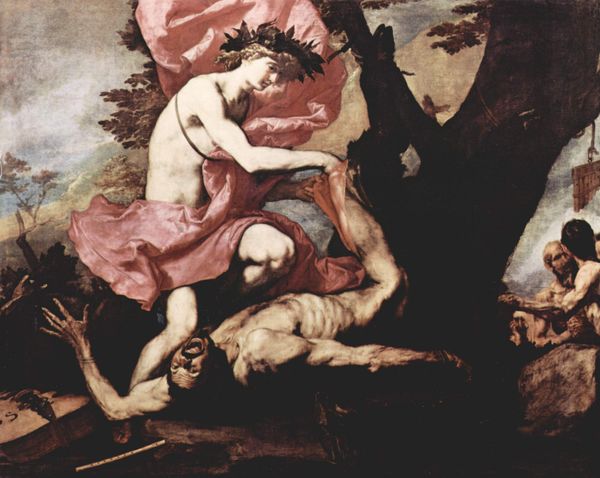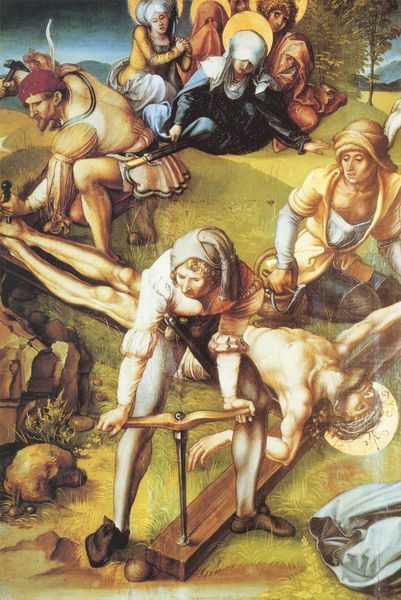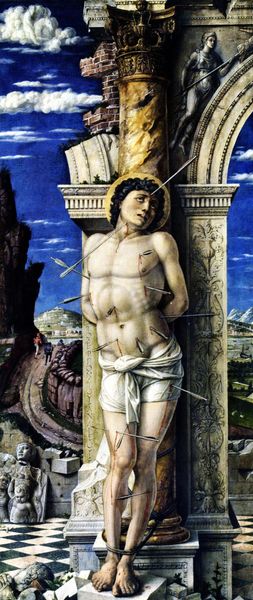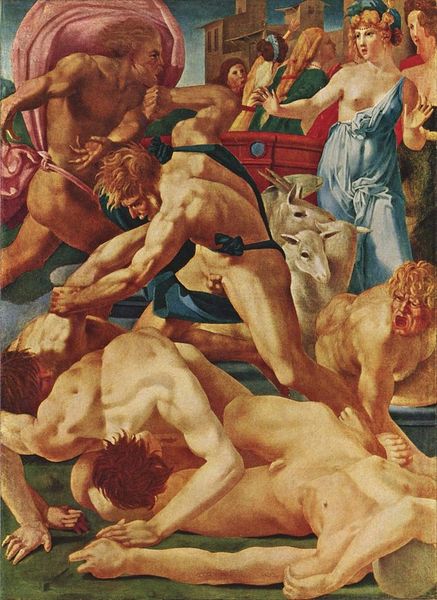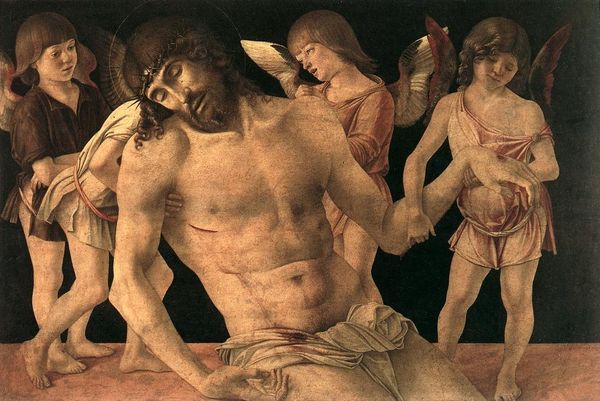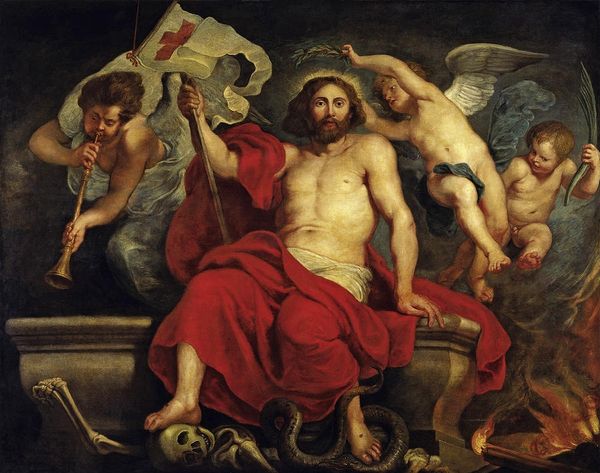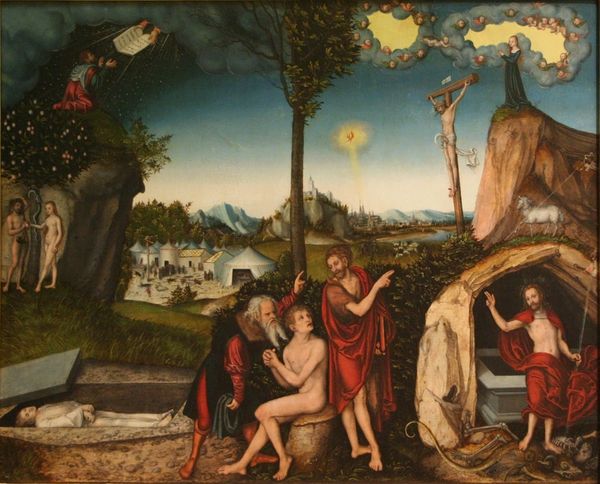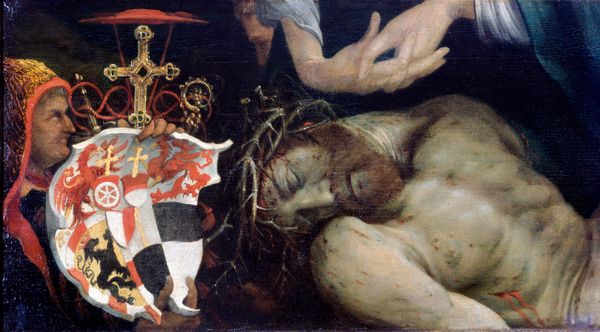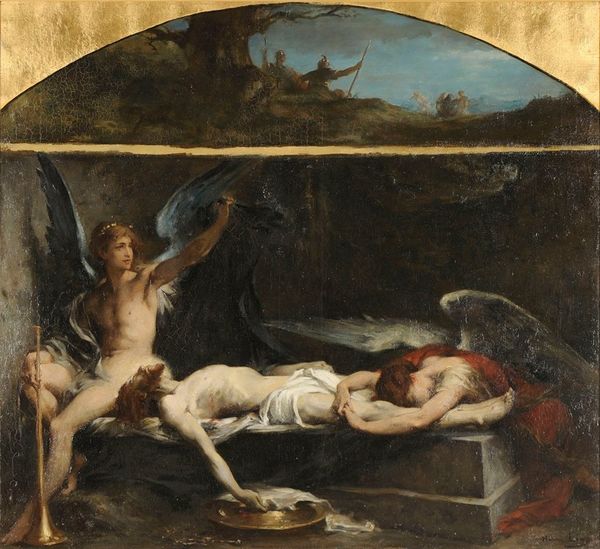
painting, oil-paint
#
portrait
#
allegory
#
painting
#
oil-paint
#
painted
#
figuration
#
romanticism
#
mythology
#
painting painterly
#
history-painting
#
academic-art
Copyright: Public domain
Curator: Luc-Olivier Merson's "Saint Edmund the Martyr King of England" presents us with a striking tableau, seemingly steeped in the aesthetics of Academic art. Editor: There's a bleakness here, isn’t there? Despite the classicizing pose of the figure, it's more than a history painting, hinting perhaps at the inevitable corruption of power, if you factor in the angel, dog and weapon as details, Curator: The application of paint certainly emphasizes drama, from the almost unnaturally pale skin of Saint Edmund to the contrasted use of dark colors surrounding him. Look closely at the ground; observe how texture and shade imply decay. The choice of pigment is deliberate, serving to enhance narrative effect. Editor: Indeed. Saint Edmund was a King and a martyr, so let's not dismiss how identity plays into the historical depiction and reception. And how should we think about it, viewing it now? Is this about nationalism? Or does the work use an appeal to religious heroism to mask less savoury imperialist projects? Who is represented and who is erased in this version of the English story? Curator: That sword on the ground is telling: an object now obsolete in purpose next to our fallen hero. Merson's choice of positioning emphasizes the temporal quality of this historical moment, freezing this martyr in time. Editor: We must recognize the romantic vision of idealized and masculine beauty in Merson's saint – especially important as he dies to supposedly uphold societal law, but maybe should've focused on equity. Also, that weapon – that object of warfare that led to this consequence, might show something different in Saint Edmund than nationalism. Perhaps in looking to history and past injustices, we consider the material instruments of oppression. Curator: A complex figure certainly emerges when examining process, symbolism, material. We're not simply looking at hagiography. The piece is deliberately conceived to evoke a critical discourse regarding its reception in contemporary contexts and its labor of manufacture.. Editor: These historical images require that critical view – that deeper excavation into how art, history and our interpretations create power.
Comments
No comments
Be the first to comment and join the conversation on the ultimate creative platform.
